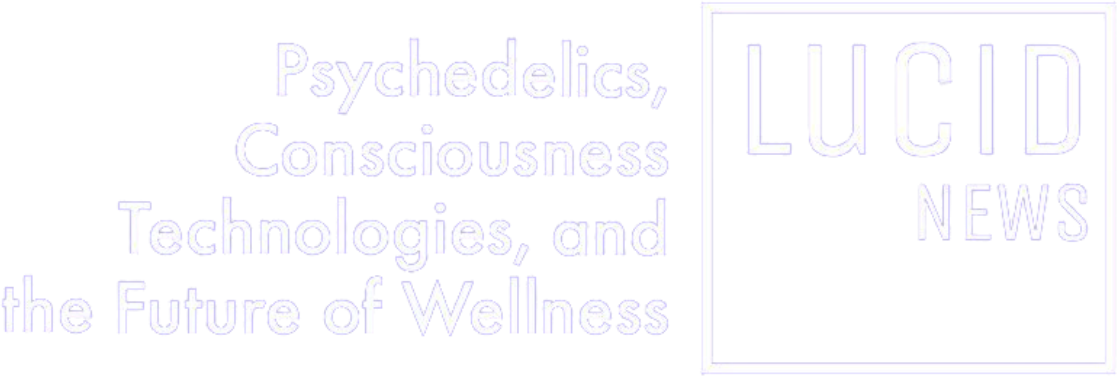Psychedelics Open Opportunity to Study Synesthesia

The late Owsley Stanley III, a large-scale LSD manufacturer and sound engineer for the Grateful Dead, traced his groundbreaking work in sound design back to synesthesia. While on LSD, Stanley says he was able to literally see sound coming out of the speakers. According to journalist Tony Hillier, that sensory relationship became the foundation of his audio engineering. Stanley trusted that LSD was showing him real things, just removing the filters that our brains create.
While there’s no shortage of anecdotes about psychedelics stimulating this kind of sensory blending, there hasn’t been much systematic research of synesthesia induced by substances. It’s a poorly understood relationship and a topic that many neuroscience researchers studying congenital – or inherited – synesthesia have dismissed as neurochemically different.
Studying Synesthesia Among Psychedelics Users
David Luke, a London-based researcher at the University of Greenwich, set out to study the topic with fellow researcher Devin B. Terhune. The researchers surveyed 644 people, asking them for reports of their drug experiences, sorting through the information to find out which substances caused synesthesia in drug users. Synesthesia was defined as an “experience in which there is a blending of the senses, such as shapes having a particular taste, sounds having a particular shape, or numbers having a particular colour.”
The researchers were interested in looking at a wide range of drug experiences, so they inquired about 28 psychoactive drugs from 12 different drug classes. They compared synesthetes (people who experience congenital synesthesia) with non-synesthetes.
The participants were ages 18-74, mostly from the U.S. and the UK, but included people from 45 countries. 457 were non-synesthetes (considered “controls” in the study) and 187 were synesthetes. In the general public, about 1-4% of the population experiences synesthesia without drugs.
This study had a much greater proportion of people who experience congenital synesthesia because researchers recruited some participants through online communities of synesthetes. The study also had a greater proportion of recreational drug users than in the general population because researchers recruited people to discuss this topic specifically.
Results of the Study
Luke and colleagues found that, according to the self-reports, a diverse set of drugs can cause synesthesia. LSD and other tryptamines (such as DMT and psilocybin) are the most likely to induce synesthesia. These drugs primarily affect the serotonin systems which fits with past research positing that synesthesia follows a serotonergic pathway.
But the researchers also found that even in experiences with non-serotonergic drugs – such as salvia, ketamine, methadone and cannabis – users reported experiencing synesthesia. This seems to indicate that different drug classes can produce synesthesia through different neurochemical pathways. The researchers write that these findings suggest “these induced experiences are not exclusively serotonergic.”
Sound-color, sound-space, and sound-shape were the most common types of synesthesia reported by drug users, with sound-color the most common pairing and most often stimulated by tryptamines. The types of synesthesia did not seem to be specific to drug classes. The researchers point out, however, that because many psychedelic trips intentionally include music, this might be part of the reason that sound is commonly involved.
Luke’s research supports the idea that drug-induced synesthesia is related to congenital synesthesia neurochemically. Researchers found that drugs that tend to induce synesthesia in non-synesthetes also enhance and induce novel synesthesias for synesthetes.
“So it seems to be having this same effect, whether or not you’ve got [congenital] synesthesia,” says Luke. He points out that this means research on synesthesia associated with psychedelics could be “a back-door way to understand synesthesia,” as 57% of LSD users surveyed experience it, compared to the few people who are synesthetes.
“What we’ve been trying to show,” says Luke, “[is] that actually it’s the same thing, but it’s just shorter acting.” People with congenital synesthesia have many experiences over time, which he says helps create a consistency in their synesthesia, cementing particular associations.
For example, an energetic, bubbly personality will always link with the color teal. The number four will always make a crackling sound. Luke believes that the only reason psychedelic-induced synesthesia isn’t as consistent is because the experience is brief and doesn’t allow for deeper, more regular associations.
Luke told Lucid News that one of the greater threads of meaning in research about synesthesia is how it can shed light on what neurobiology researchers call the “binding problem.” How do humans take different pieces of sensory input (such as the motion of a car moving, the color red, and a car’s rounded shape) that are processed as distinct paths or in distinct regions of the brain, and bind them cognitively into one coherent perceptual experience? This allows humans to understand and navigate the world, and it’s a process that’s not yet deeply understood on a neurobiological level. Studying people experiencing synesthesia, which is fundamentally a binding of at least two distinct pieces of sensory information, could help with that research.
Luke also believes his research on synesthesia (and potentially how it relates to the binding problem), may point toward a keystone relationship between psychedelics and human cognition. Luke says his research “goes a long way to substantiating or shoring up the stoned ape hypothesis of Terence McKenna.” In his 1992 book, Food of the Gods, McKenna posited that access to Psilocybe cubensis, a psychedelic mushroom, was an evolutionary catalyst for humans. According to Luke, “synesthesia induced by psychedelics may have been important in the development of language.”
Image: Nicki Adams







